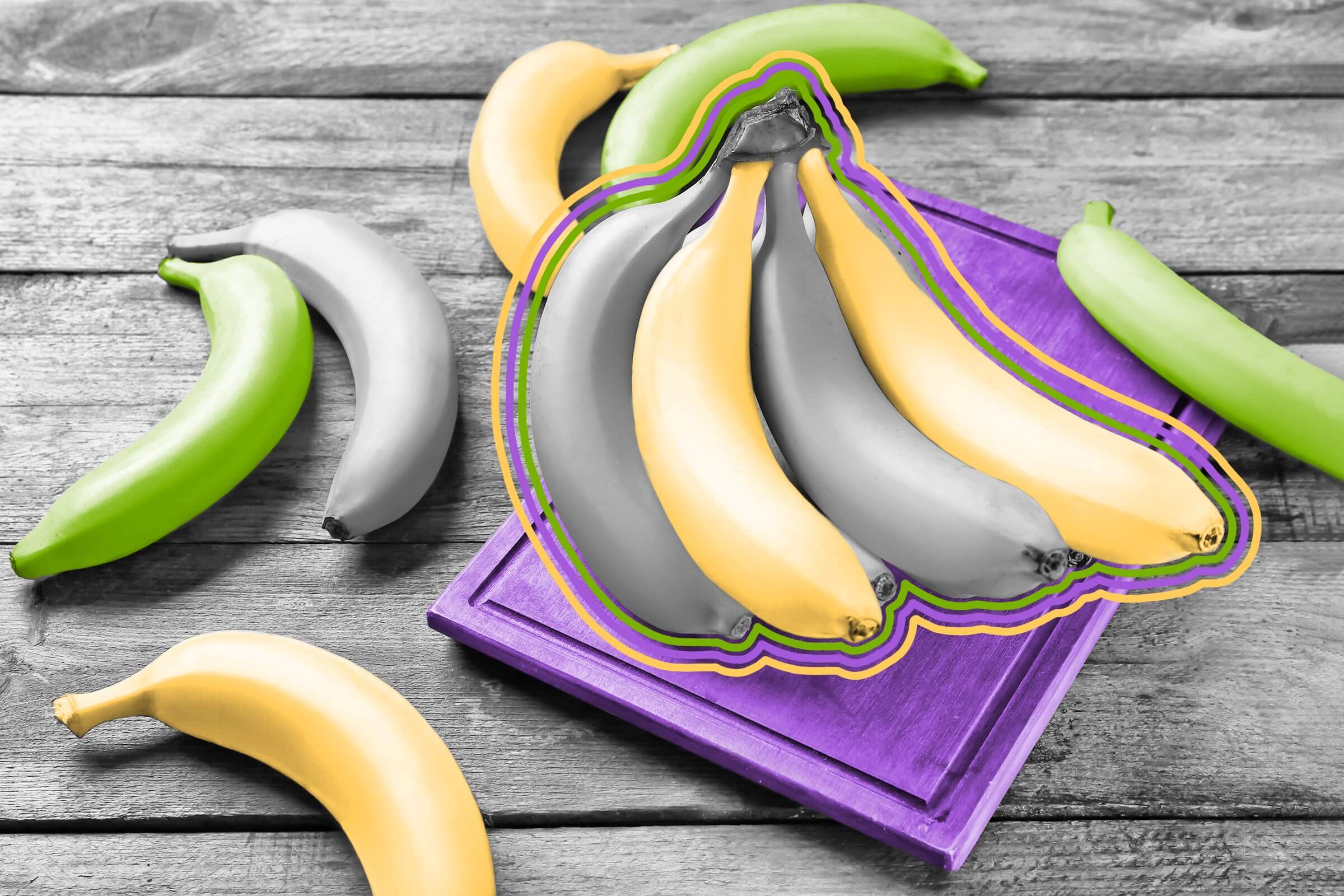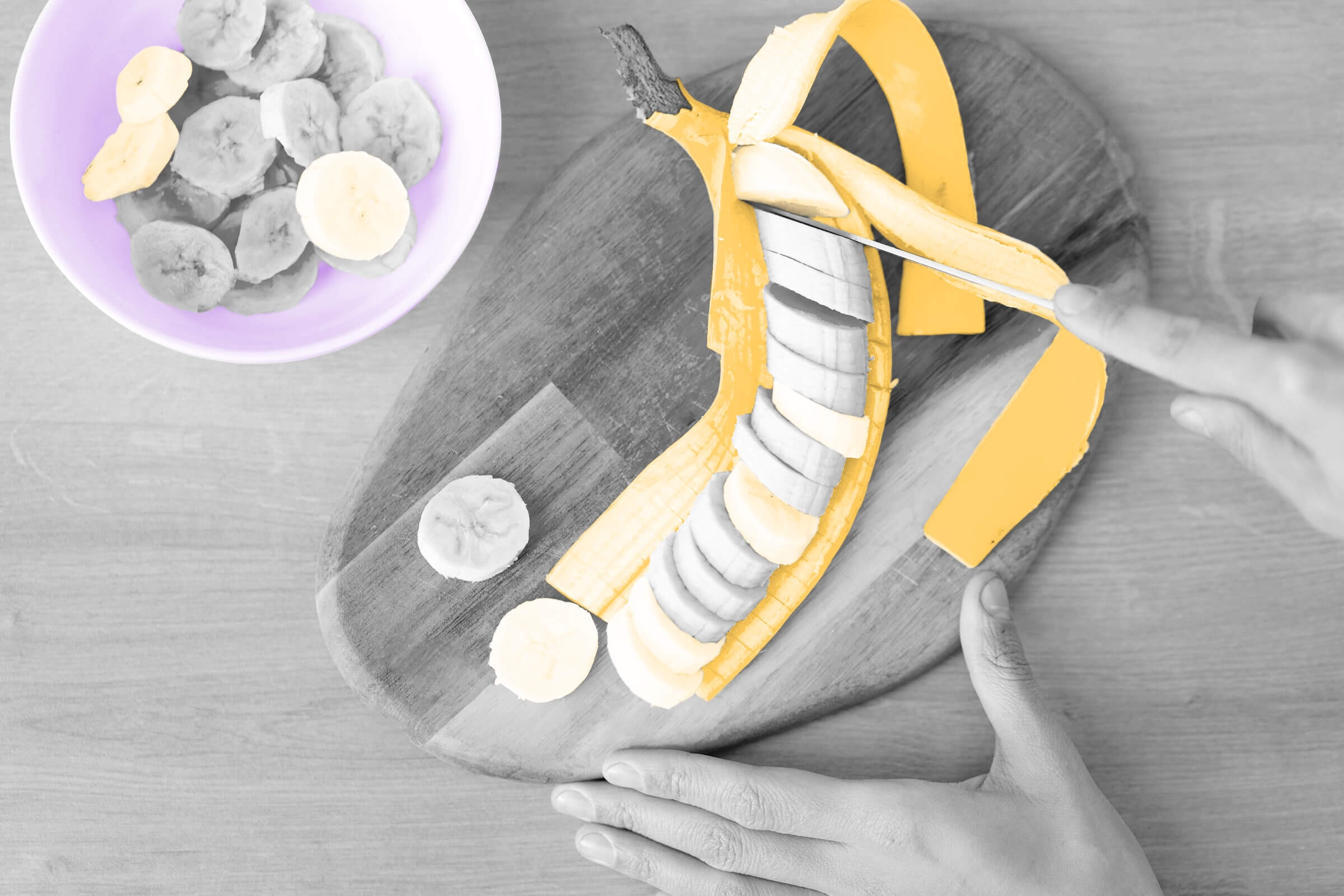
Bananas are slightly radioactive.
Mentions of radioactivity can send the mind in a dramatic direction, but many ordinary items are technically radioactive — including the humble banana. Radioactivity occurs when elements decay, and for bananas, this radioactivity comes from a potassium isotope called K-40. Although it makes up only 0.012% of the atoms found in potassium, K-40 can spontaneously decay, which releases beta and gamma radiation. That amount of radiation is harmless in one banana, but a truckload of bananas has been known to fool radiation detectors designed to sniff out nuclear weapons. In fact, bananas are so well known for their radioactive properties that there’s even an informal radiation measurement named the Banana Equivalent Dose, or BED.
So does this mean bananas are unhealthy? Well… no. The human body always stores roughly 16 mg of K-40, which technically makes humans 280 times more radioactive than your average banana. Although bananas do introduce more of this radioactive isotope, the body keeps potassium in balance (or homeostasis), and your metabolism excretes any excess potassium. Oh, and in case you were wondering, a person would have to eat many millions of bananas in one sitting to get a lethal dose (at which point you’d likely have lots of other problems). So go ahead and eat that banana cream pie — you can leave the Geiger counter at home.
Slipping on a banana peel is one of the world’s oldest jokes, but it’s also based on some solid physics. In 2011, researchers from Kitasato University in Tokyo analyzed the slipperiness of banana peels compared to orange and apple peels. Without a doubt, bananas were the slipperiest, due to polysaccharide follicular gels that spill out when the peels are crushed (or stepped on). These same chemicals are found in membranes where human bones meet, and further research on them could lead to better prosthetics. Not content with just taking a scientist’s word for it, Twitter users in 2016 created the viral Banana Peel Challenge, which provided even more qualitative data proving the devilish slipperiness of the banana peel.

